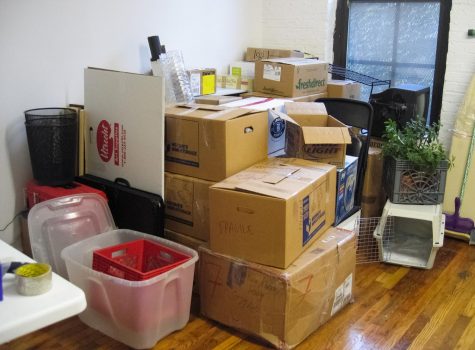The craic with Catherine: Adventures in Connemara
March 11, 2016
Oh dear, a herd of sheep in the road, must be rush hour in Connemara.
When studying abroad, it’s always important to remember that you’re a student first and a traveler second. But there has to be a balance between the two. Take every opportunity you can to explore the area where you’re staying and then some.
I’ve figured out how my schedule works for school, I know when my final essays are due, and I know when I have school holidays. So I took advantage of a free weekend and took a day tour of Connemara.
One of the highlights of the tour was seeing the Kylemore Abbey. This abbey was created by a Munster man named Mitchell Henry. The name Kylemore, as I discovered, comes from “An Choill Mhór”, which is Gaelic for “The Big Wood”, referring to the ancient oak trees in the area.
Mitchell and his wife Margaret fell in love with Kylemore while on honeymoon in Connemara back in 1849. After receiving a good-size inheritance, Mitchell returned to build what would be known today as Kylemore Abbey, along with a Victorian garden close by.
However, this story isn’t all happy. Margaret tragically died after contracting dysentery in Egypt in 1874. In her honor, Mitchell had a “cathedral in miniature” built with real Connemara marble inside. Imagine being loved so much that your husband built you a Gothic-style church in your memory.
After Mitchell’s death, the abbey went through several stages in its lifespan. It was a wedding gift for the Duchess of Manchester, and then the castle was lost by the Duke’s terrible luck with gambling. In 1920, Kylemore was bought by the Irish Benedictine Nuns and officially became an “abbey.”
From there, the abbey became a boarding school for girls, whose students came from the rich and famous all over the world. The building even survived a fire in 1959, which destroyed the entire west wing of the abbey and half the property.
Today, the abbey is still owned by the nuns who continue their work and prayer on the grounds.
A casual drive through southern Connemara helped me wind down from the excitement of the abbey. There, I could see Connemara ponies, a distant view of the Aran Islands, and traditional Irish houses with thatch roofs.
These traditional Irish houses had their original thatched roofs, but would also have the modern accommodations like electricity and plumbing. It was important to keep in mind some of the slight issues with owning a traditional Irish house, i.e. the fire hazard of having a roof made of hay.
Once the tour was done, it was back to school and preparation for midterms. Another adventure will no doubt come soon.




















